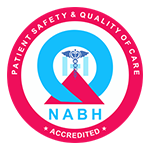Autosomal recessive polycystic kidney disease (ARPKD): ARPKD is the rarest case seen in polycystic kidney disease patients. This disease is transferred by a recessive gene The symptoms of the disease are noticed immediately after the birth, sometimes they don’t appear until later in childhood.
Kidneys are important organs of the body that chiefly function to remove toxins, waste and excess water out of the body through the medium of urine. Kidney diseases can be affected by both lifestyle changes and genetics. Congenital cystic kidney disease is a kidney disorder develops through a genetic mutation in the body cells. "Congenital cystic kidney disease".
Polycystic kidney disease is a congenital cystic kidney disease in which clusters of cysts develop in the lining of the kidneys. These cysts are the fluid-filled sacs that are non- cancerous and vary in sizes.
The congenital cystic kidney disease develops several noticeable symptoms such as:
The development of kidneys can affect other areas of the organ causing multiple other complications like:
Genetic mutation is the prime cause of congenital cystic kidney disease. There are two major genetic defects witnessed that can cause polycystic kidney disease:
Autosomal dominant polycystic kidney disease (ADPKD): This disease is transferred by a dominant gene. No symptoms are visible until the age of 30-40 years. ADPKD is the common type seen in polycystic kidney disease patients.
Autosomal recessive polycystic kidney disease (ARPKD): ARPKD is the rarest case seen in polycystic kidney disease patients. This disease is transferred by a recessive gene The symptoms of the disease are noticed immediately after the birth, sometimes they don’t appear until later in childhood.
Congenital cystic kidney disease is diagnosed few different tests like CT SCAN, ULTRASOUND, and MRI. These tests reveal the actual structure of the kidneys that help in detecting the size of the cysts and the enlarged kidneys. "Congenital cystic kidney disease".
Allopathy claims that there is no cure for congenital cystic kidney disease. Once it has happened it cannot be reversed rather can be managed throughout the life. It offers symptomatic treatment of polycystic kidney disease by relieving the effects of the complications caused by the disease."Karma Ayurveda Reviews"
Unlike allopathy, Ayurveda has a completely different standpoint on this subject. It claims that all kidney disorders can be treated by using a correct line of treatment. Ayurveda employs naturally grown herbs in their medicines and offers healthy renal diets that smoothly relieves the effects of the congenital cystic kidney disease and also reverse the impairment. "Congenital cystic kidney disease", Ayurvedic treatment measures are a permanent cure of all body ailments, without any side effects.
Karma Ayurveda, a kidney treatment hospital is the finest Ayurveda centre that works under the line of natural measures. This kidney treatment centre is proudly owned by a prominent physician Dr. Puneet Dhawan whose safe ayurvedic treatment measures have saved the lives of thousands of kidney patients without the need for dialysis.

Certificate no- AH-2023-0186
JAN 05,2023-JAN 04,2026
"Ayurveda is not just a system of medicine; it's a way of life. Connect with us to embrace a lifestyle that nurtures your body, mind, and soul."
Book Consultation Now